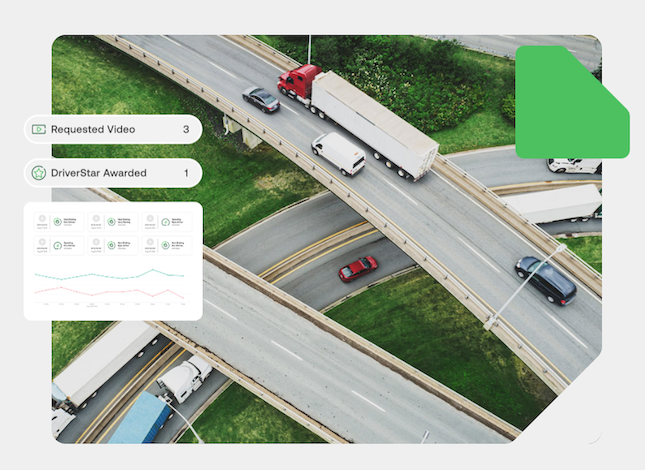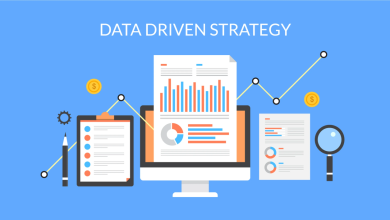
Safety is a top priority for the transportation sector, particularly within the commercial fleet industry, where drivers spend significantly more time on the road than the average motorist and face a significantly higher risk of road accidents—estimated at 1 in 10 or more, compared to 1 in 15 for regular drivers. This risk is even more pronounced today, as increased road traffic and unpredictable conditions make accidents more likely than ever.
Recent reports show that while overall vehicle-related fatalities have decreased by 3.6%, crashes involving large trucks have been steadily rising since 2009. For fleet operators, the implications are significant, as a single road accident can cost businesses anywhere from $16,000 to $75,000, with costs soaring when injuries or fatalities are involved. Additionally, accidents drive up insurance premiums, incur cargo claim expenses or reputational costs through brand damage.
These challenges underscore the urgent need for innovative safety solutions in high-risk sectors like trucking and logistics. AI-powered fleet management solutions are increasingly emerging as a powerful solution to overcome these challenges, improving driver safety and fleet efficiency. Our research indicates that 81% of UK/EU supply chain leaders plan to implement AI solutions to mitigate risks and enhance safety within the next year.
AI-powered solutions: Driving safety forward
The fleet industry has historically relied on a reactive approach to safety. Advanced Driver Assistance Systems (ADAS), for instance, are frequently deployed within fleet operations to help prevent fatal accidents. However, these systems have a key limitation—they only activate when danger is imminent, intervening at critical moments, and often when it’s already too late.
Given that driver behaviours such as fatigue, distraction, and unsafe driving habits are among the leading causes of road accidents, with research showing that human error accounts for over 70% of incidents, an effective safety strategy requires a more proactive, preventative approach—one that identifies and addresses dangerous driving behaviours before they result in accidents.
Unlike traditional fleet monitoring tools, modern AI-powered systems leverage real-time insights, predictive analytics, and continuous learning to monitor driving behaviour patterns over time. While ADAS systems monitor road and driver conditions in real-time and provide alerts to help drivers take immediate corrective actions, AI-enabled telematics go a step further by analysing driving patterns over a longer period. This analysis offers valuable feedback on common errors, repeated violations, and, coupled with driver performance scores, provides ongoing coaching to improve driving habits and reduce the likelihood of accidents in the long run.
A data-driven approach
By analysing a vast number of data points from vehicle speed and driver attentiveness to environmental conditions, modern data analytics solutions go beyond real-time insights to provide a comprehensive, data-driven approach to improving fleet safety. By identifying risky behaviours such as harsh braking, distracted driving, and driver drowsiness and fatigue, these solutions offer a holistic view of driver performance and road conditions, helping to proactively prevent incidents before they occur. The enhanced visibility of these systems provides deeper insights into the factors contributing to accidents, allowing operators to identify effective prevention strategies for the future.
Modern AI safety solutions are transforming risk detection with advanced features like Compound Alerts, which identify sequences of unsafe driving habits that occur in quick succession or as simultaneous events, such as tailgating followed by hard braking, or tailgating while talking on the phone, all in real-time. By leveraging predictive analytics, these systems detect patterns more accurately offering fleet operators a deeper understanding of driver risk beyond isolated incidents. This ensures driver profiles reflect consistent driving habits, providing a comprehensive and reliable risk assessment.
In the event that an accident occurs, AI technology enables a fast and well-coordinated response by assessing the severity of the incident and notifying the relevant parties based on priority. This in turn helps to minimise the downtime of vehicles involved in the accident, reducing operational disruptions as result.
A proactive safety culture
Fostering a safe driving culture within organisations is crucial for improving safety standards across the transport industry, and data-driven technology plays a pivotal role in these efforts.
Modern solutions that monitor 100% of driving time provide an effective way to recognise and reinforce safe driving practices in real time. For example, AI-powered systems can provide immediate feedback to drivers if they are engaging in risky behavior, such as harsh braking or excessive speeding, by sending an alert through their in-cab system. This real-time intervention helps drivers correct their behavior instantly, promoting safer driving habits. Additionally, AI-powered driving scoring systems further offer objective, data-driven insights into driving behaviour, highlighting areas for improvement while encouraging positive habits through performance tracking, such as driver ratings or tiered scoring models. Fleet managers gain a comprehensive overview of driver performance over time, enabling them to identify trends, address areas for improvement, and reward drivers who consistently prioritize safety. This positive reinforcement encourages drivers to maintain high safety standards and fosters a culture of continuous improvement, ultimately promoting long-term safety across fleet operations.
Beyond this, AI-driven insights empower fleet managers to offer customised coaching and training. By analysing 100% of driving time, these solutions generate automated feedback tailored to each driver’s specific needs and areas for improvement. Video recordings of key driving events further help drivers identify and correct unsafe behaviors, enabling them to enhance their skills more effectively. A generic, one-size-fits-all approach to driver coaching is ineffective, especially since driving habits and patterns vary from one driver to another. This highly tailored approach, enabled by AI, not only boosts driver engagement but also ensures that drivers receive the relevant support they require.
Benefits beyond safety
The benefits of AI technology extend beyond improving fleet safety, as data analytics play a critical role in boosting efficiency across operations. By leveraging data insights, fleet managers can identify operational inefficiencies such as poor routing, excessive idling and under utilisation of assets, all of which hinder productivity and lead to delays. By utilising these data insights to adjust routes and schedules, fleet operators can optimise their entire operations to make smarter, cost-effective decisions that improve productivity and profitability.
AI-powered fleet safety solutions provide fleet managers with instant insights through large language models (LLMs). This eliminates the need for manual data analysis, allowing them to quickly retrieve key information, such as top-performing drivers or the most critical alerts of the week. By reducing time spent on administrative tasks, these solutions enhance operational efficiency and free up time to focus on other important aspects, such as improving productivity and pursuing strategic initiatives.
Safer driving practices also lead to lower insurance costs, reduced downtime, and improved vehicle longevity, which, in turn, drive greater operational efficiency and long-term cost savings for fleet operators.
The road ahead
For fleet operators, having a risk strategy alone is no longer enough. To overcome the industry’s challenges, the approach to safety must evolve. AI technology is driving this shift by enabling a more proactive, preventative strategy. As fleets expand and operations grow more complex, AI’s role within operations will only deepen. By proactively identifying risks and preventing accidents before they occur, these solutions ultimately enhance driver safety, reduce inefficiencies, and improve overall operational resilience. Adopting AI-driven safety tools is not just an advantage for forward-thinking fleets looking to stay ahead—it’s a necessity for a safer, more efficient, and sustainable future.




